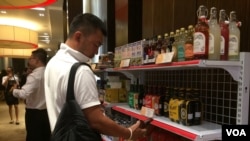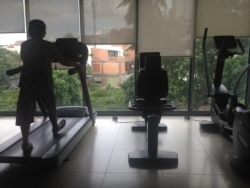To see how much the consumer has changed in Vietnam, look no further than what he drinks: soda or bubble tea.
Coca-Cola was one of the first foreign investors in Vietnam, selling in wartime and in a postwar period when many foreign companies stayed away amid a trade embargo.
These days it is not an American soft drink brand that has captured the imagination of Vietnamese drinkers, but bubble tea, brought in by a range of Asian companies, from Taiwan to Thailand. Bubble or boba tea, a sugary milk tea known for its tapioca balls, can come in endless flavors, such as strawberry, matcha, or cacao, and combined with balls of tapioca, jelly or sweet beans. The drink is decidedly more complex than soda, and increasingly, so too is the Vietnamese shopper.
This goes far beyond drinks. It used to be that foreign companies entered Vietnam to sell the basics: fast moving consumer goods, such as bags of instant noodles or paper towels. But as Vietnam moves toward a more consumption-based society, foreign investors are responding to a desire for a greater variety of products and services.
“[M]ore international brands are entering Vietnam than ever, thanks, in part, to the liberalization of Vietnam’s regulatory and social environment,” Colliers International Research, a real estate services company, wrote in its first quarter analysis of the Vietnam market. “This increase in brands will entice consumers to spend more ... with the shift from solely retail-focused to more comprehensive entertainment experiences.”
Bubble tea, after all, is not just a drink but a social experience, seen as a more fun, colorful way for people to get together than over the traditional coffee.
Other kinds of businesses, like boxing gyms, pet shops and cosmetics stores, are starting to appear, too, and with foreign investor backing. It seems every week there is a new storefront popping up, hoping to cater to the Vietnamese shoppers’ changing tastes. The new businesses are engaging in lines of commerce from Japanese whisky bars to stores for birthday party paraphernalia, that did not exist in the Southeast Asian country even a decade ago.
Vietnamese citizens are earning more, and they are ready to spend it. A survey by Nielsen Vietnam, a market research company, indicated consumer confidence rose 7% in the first quarter of 2019 compared with the last quarter of 2018.
“This significant increase of consumer confidence indicates that consumers continue the positive” sentiment, said Nguyen Huong Quynh, managing director at Nielsen Vietnam.
“Manufacturers and retailers need to capture the latest trends in the consumer market and need to act faster to respond to the evolving needs of consumers,” she added.
The changing behavior extends past the biggest cities of Hanoi and Ho Chi Minh City. In the central beach town of Da Nang, for example, the changing appetite of consumers is drawing ever more types of business.
“A great deal of international retailers are planning to penetrate the local market to introduce their products to tourists and local customers in Da Nang and enhance their brand image in Vietnam,” the Colliers analysis said.










